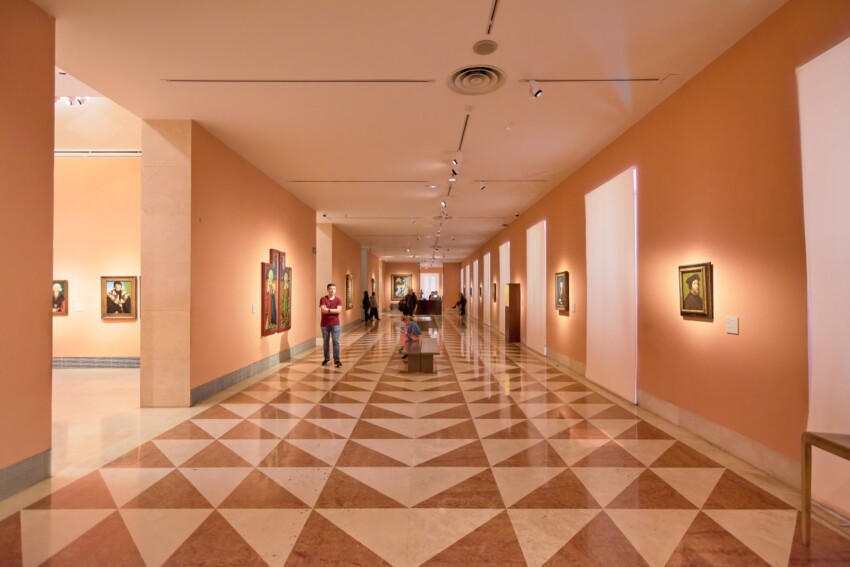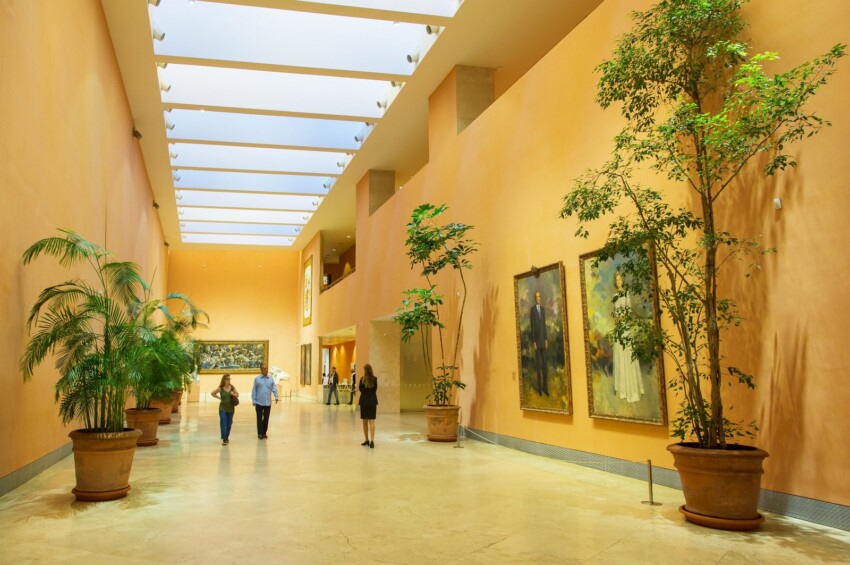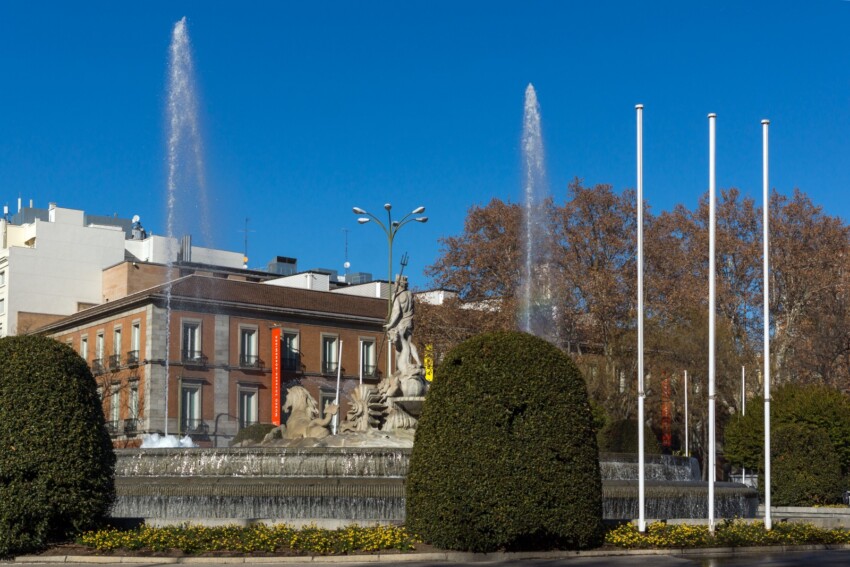
A few steps away from the Prado Museum is another very famous art gallery in Madrid, the Thyssen-Bornemisza Museum: a visit to this museum is a fascinating journey through European painting from the Middle Ages to the end of the 20th century.
The result of the passion for art and collecting of the Thyssen-Bornemisza barons, who in just two generations managed to collect more than a thousand works of exceptional value, the museum possesses extraordinary works by artists of the calibre of Duccio, Van Eyck, Dürer, Caravaggio, Rubens, Monet, Van Gogh, Gauguin, Kirchner, Mondrian, Klee, Hopper, Dali and Lichtenstein.
With the opening of this museum in 1992, the city of Madrid succeeded in uniting three prestigious museum venues within the space of one kilometre, which together represent a complete excursus in the history of European art. A true mecca for art lovers, the Thyssen-Bornemisza Museum is a top attraction for all tourists on holiday in Madrid.
Why a German name for a Spanish museum? The reason can be traced back to an exciting family saga that began with the German entrepreneur August Thyssen, founder of an industrial empire in the steel industry: with the intention of starting a sculpture collection, he commissioned the artist Auguste Rodin with seven marble statues, four of which are on display in the museum today.
His son Heinrich, who acquired the title of Baron Thyssen-Bornemisza through marriage to the daughter of a Hungarian nobleman, became passionate about art and in just twenty years managed to collect 525 works of great value. In 1932, determined to find a suitable home for his ever-growing collection, he purchased the elegant Villa Favorita in Lugano.
Upon his death, the works of art were dispersed among his heirs, but his son Hans Heinrich, the only one interested in continuing his father’s collecting efforts, bought them back one by one.
As the decades passed, Villa Favorita proved inadequate for the needs of an ever-growing collection. Among the offers received from various countries all over the world, it was the one from the Spanish government that convinced the Baron: an elegant home a stone’s throw from the famous Prado Museum, internationally recognised as one of the most important museums in the world.
Thus in 1992 the state-owned Thyssen-Bornemisza Museum saw the light of day in a location that enhances the priceless value of the collection.
Since 2004, the Carmen Thyssen-Bornemisza Collection has been added, with more than 200 works on deposit displayed in 16 new rooms, expanding the styles and genres already present in the original core of the permanent collection.

It could be said that the collection of the Thyssen-Bornemisza Museum complements the artistic heritage of the two most famous museums in Madrid, the Prado and the Reina Sofia: it alone covers the entire span of time on display in the two museums, with works ranging from the 14th to the 20th century, but develops movements and currents only marginally represented in the other two museums.
A striking example is 14th century Italian painting, completely absent in the Prado and the Reina Sofía, which is instead represented here by Duccio di Buoninsegna‘s ‘Christ and the Samaritan Woman’.
The eclectic collection, the result of the evolution of the personal taste of the Barons Thyssen-Bornemisza, includes works from the early Flemish school, a selection of 15th century portraits and a significant selection of landscape and genre painting.
More recent styles and movements exhibited at the museum include Impressionism and Post-Impressionism, the avant-garde, Fauvism, Expressionism, Surrealism, Abstraction and Pop Art.
In addition, a visit to the Thyssen-Bornemisza Museum is a unique opportunity in Europe to admire works of 19th-century North American painting.
To visit the museum’s collection in chronological order and observe how art has developed over the different centuries, start on the second floor, then go downstairs and finally to the ground floor.
Among the countless noteworthy works in the Thyssen-Bornemisza Museum, we have selected five that you absolutely must see:

The entrance ticket to the Thyssen-Bornemisza Museum includes the temporary exhibitions; it is only possible to buy admission to the exhibitions. There are discounts for young people, pensioners and disabled people. On Mondays from 12 noon to 4 p.m. admission is free.
In view of the large number of tourists at the Thyssen-Bornemisza, we recommend that you buy a ticket with priority admission: this will save you time in the queue at the entrance and will ensure that you visit on the day of your choice.
Alternatively, you can book a tour with a guided visit to the Thyssen-Bornemisza that also includes the entrance ticket. Some tours also include other museums in Madrid.
The museum is also part of the Paseo del Arte route, which also includes the Museo del Prado and the Museo Nacional Reina Sofía: if you plan to visit all three museums you can buy the combined ticket, which will save you money.
The Thyssen-Bornemisza Museum is located in the heart of Madrid and can be reached by several bus lines, the L2 metro and the train. If you have rented a car, you will find the Las Cortes car park a short distance from the museum.
Practically next to the Thyssen-Bornemisza museum there are a number of very good hotels, many of them part of the big international chains, such as NH, Doubletree by Hilton and Westin, all of which were created to accommodate mainly visitors to the Prado museum (remember that the two museums are located along the same avenue and are no more than 300 metres apart). If you find these hotels too expensive, you can choose from a wide range of simpler accommodation options, such as flats, guest houses or bed and breakfasts, mainly located in the side streets.
The Museo Nacional Thyssen-Bornemisza is located practically in the city centre, very close to the Puerta del Sol and the Prado Museum.
City Card allow you to save on public transport and / or on the entrances to the main tourist attractions.
